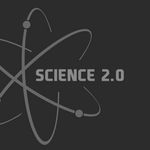Cancer Research

A nanoparticle drug delivery system designed for brain tumor therapy has shown promising tumor cell selectivity in a novel cell culture model devised by University of Nottingham scientists.
Therapy for brain cancers is particularly difficult for a number of reasons, including getting sufficient drug to the tumor and selectivity of drug action. “We are working on a number of new therapeutic approaches using nanoparticle drug delivery systems explained Dr Martin Garnett, Associate Professor of drug delivery at the School of Pharmacy, however, understanding and developing these systems requires…

Clemson University chemists have developed a method to dramatically improve the longevity of fluorescent nanoparticles that may someday help researchers track the motion of a single molecule as it travels through a living cell.
The chemists are exploiting a process called “resonance energy transfer,” which occurs when fluorescent dye molecules are added to the nanoparticles. Their findings will be reported at the 234th annual national American Chemical Society meeting Aug.19-24 in Boston.
If scientists could track the motion of a single molecule within a living cell it could reveal a world of…

Will we domesticate biotechnology in the next 50 years? More than 150 years of spectacular advances in physics, chemistry, and computing have thoroughly transformed the way we live. Yet so far, the big revolutions in molecular biology have had their impact primarily on professional laboratories, not our everyday lives. What do we need to do in order to domesticate biotech?
Physicist Freeman Dyson recently explored this question:
"Will the domestication of high technology, which we have seen marching from triumph to triumph with the advent of personal computers and GPS receivers and…

A new study, published in the August issue of Glycobiology, found that exposing prostate cancer cells to pectin under laboratory conditions reduced the number of cells by up to 40 percent.
University of Georgia Cancer Center researcher Debra Mohnen and her colleagues found that the cells literally self-destructed in a process known as apoptosis. Pectin even killed cells that aren’t sensitive to hormone therapy and therefore are difficult to treat with current medications.
“What this paper shows is that if you take human prostate cancer cells and add pectin, you can induce programmed cell…

By creating "Teflon" versions of natural antibiotics found in frog skin, a research team led by biological chemist E. Neil Marsh has made the potential drugs better at thwarting bacterial defenses, an improvement that could enhance their effectiveness.
Marsh and collaborators work with compounds called antimicrobial peptides (AMPs), which are produced by virtually all animals, from insects to frogs to humans. AMPs are the immune system's early line of defense, battling microbes at the first places they try to penetrate: skin, mucous membranes and other surfaces. They're copiously produced in…

Errors in the genetic code can give rise to cancer and a host of other diseases, but finding these errors can be more difficult than looking for the proverbial needle in the haystack. Now, scientists at Johns Hopkins have uncovered how the tiny protein-machines in cells tasked to search for such potentially life-threatening genetic damage actually recognize DNA errors.
Appearing online next week in Nature, the Hopkins team describes how the UDG enzyme (for uracil DNA glycosylase) scrutinizes the shape of DNA building blocks by holding onto them and testing their fit into a specially sized…

Evidence from laboratory experiments on rats and on human colon cancer cells also suggests that anthocyanins, the compounds that give color to most red, purple and blue fruits and vegetables appreciably slow the growth of colon cancer cells.
The findings also bring scientists a step closer to figuring out what exactly gives fruits and vegetables their cancer-fighting properties.
“These foods contain many compounds, and we're just starting to figure out what they are and which ones provide the best health benefits,” said Monica Giusti, the lead author of the study and an assistant professor of…

Scientists have determined for the first time the atomic structure of an ancient protein, revealing in unprecedented detail how genes evolved their functions.
"Never before have we seen so clearly, so far back in time," said project leader Joe Thornton, an evolutionary biologist at the University of Oregon. "We were able to see the precise mechanisms by which evolution molded a tiny molecular machine at the atomic level, and to reconstruct the order of events by which history unfolded."
A detailed understanding of how proteins – the workhorses of every cell – have evolved has long eluded…

Individuals with chronic myeloid leukemia (CML) are treated first with a drug known as imatinib (Gleevec), which targets the protein known to cause the cancer (BCR-ABL). If their disease returns, because BCR-ABL mutants emerge that are resistant to the effects of imatinib, individuals are treated with a drug known as dasatinib (SPRYCEL), which targets BCR-ABL in a different way.
However, patients that relapse after treatment with dasatinib, because BCR-ABL mutants emerge that are resistant to the effects of this drug, are now beginning to be seen in the clinic. Researchers from Memorial Sloan…
If there is a group of humans who whose fate tracks with that of lab mice, it is that of the Caloric Restriction Society, whose members make a lifestyle out of the long-noted fact that lab mice live nearly twice as long as regular mice--if they are dramatically underfed. I wondered what this group of steel-willed individuals, whose members eat anywhere from 25-40 percent less than us on a daily basis, was up to lately. So this past weekend I travelled to Tarrytown, NY to see them in action. Here is my report:
Paul McGlothin, the predictably lanky chief…